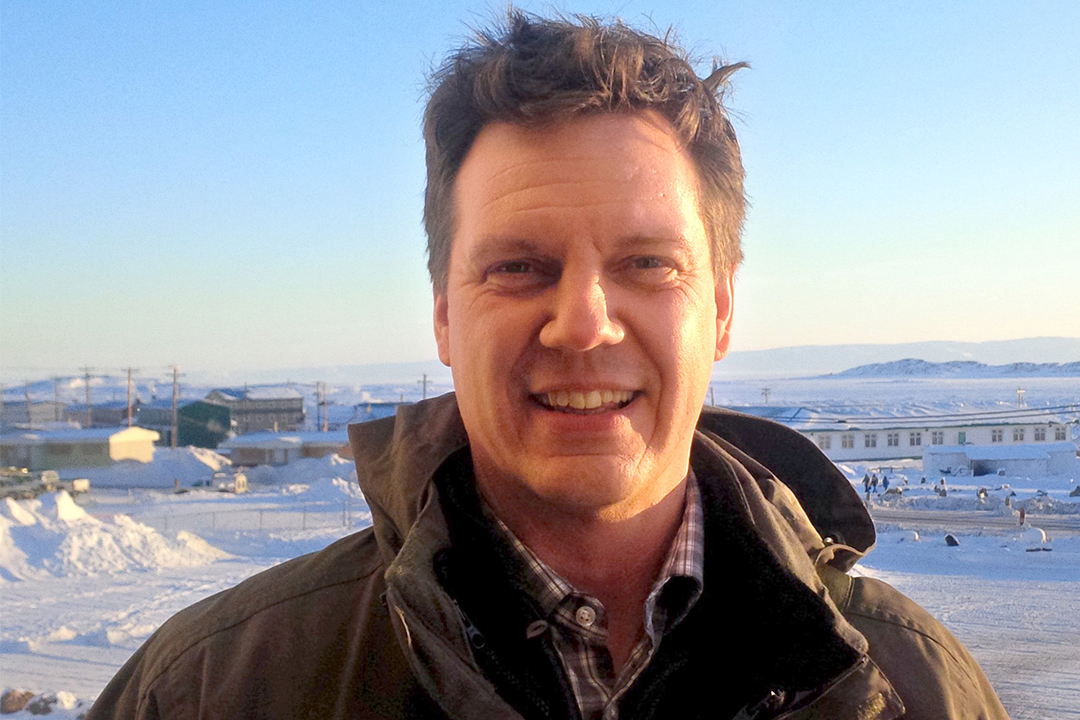
SENS professor touts opportunities for Indigenous communities
While the debate continues over the potential merits and pitfalls of federal carbon pricing, one SENS professor sees a growth opportunity for a group of Canadians who are often sidelined in discussions about energy and economy.
Carbon pricing has become an increasingly hot-button issue in Canadian politics since October, when Prime Minister Justin Trudeau announced a planned minimum price of $10 per tonne to be implemented by 2018. Some opponents to the approach, including Saskatchewan Premier Brad Wall, are concerned that the plan could have a detrimental effect on the provincial economy.
Putting the political debate aside, U of S School of Environment and Sustainability professor Greg Poelzer believes that the situation could create a financial boom for northern Indigenous communities.
“This is probably the most important development in Canadian history in the last 100 years, in terms of renewing Indigenous relations. People probably don’t realize the magnitude of this opportunity,” said Poelzer, who is also the founding director of the International Centre for Northern Governance and Development at the U of S.
In November 2015, Saskatchewan set a goal of bringing its use of renewable resources up to 50 per cent of its overall energy consumption by the year 2030, effectively doubling its current 25 per cent usage in only 15 years. Meanwhile, the federal government has made reconciliation with Canada’s Aboriginal population a priority as the nation moves forward.
In Poelzer’s mind, these are two goals that naturally fit together in ways beneficial to all parties and will bring newfound economic growth to Indigenous communities in the North and beyond.
“Clean energy is going to create a whole new massive industry, quite frankly, both in the addition of new power and the replacement of fossil-based energy,” he said.
Poelzer credits this potential in large part to renewable energy being less site-specific than the sources widely used today. A local mining facility, for example, can prove very beneficial to those communities that are lucky enough to have ore deposits nearby, while other groups are left without economic benefits simply due to a lack of geological resources in their area.And while renewables still rely on this “luck of the draw” system, as Poelzer puts it, the widespread potential for wind, solar and hydro energy in northern Saskatchewan is staggering enough to more than make up for it.
“When you think of where most of the potential hydro facilities would be, the vast majority are going to be in northern Saskatchewan,” Poelzer said. “Eighty-six per cent of the population in northern Saskatchewan is Aboriginal, so many of those sites are almost invariably, just by definition, going to be near or on Indigenous lands and waters. It creates tremendous partnership and new business opportunities for Indigenous peoples.”
Poelzer added that these kinds of partnerships only get more enticing when you look into the common, multi-decade terms for electrical production agreements—especially when compared to those of extractive industries, such as potash and oil, which rise and fall according to the whim of global commodity prices.
“When things are going well, there’s more jobs at the mine, more services, more contracts. When prices fall, the reverse happens,” he said. “With electricity, usually you have 20- or 30-year power purchase agreements. With that comes great stability. You can project outwards, you know what the pricing is going to be.”
Poelzer was quick to caution, however, that an across-the-board standard on carbon prices may ultimately only forge new difficulties.
“We can’t go with a cookie cutter approach,” he said. “Think of northern communities, not just in Saskatchewan but elsewhere, that are diesel dependent. You can’t put a price on that, because you’re dealing with the poorest populations in Canada that are paying the highest costs in fuel. Tax on top of that would be just unconscionable.”
However, if such pitfalls are avoided, Poelzer is confident that carbon pricing could help strengthen the economy for northern communities, and one which could send ripples across the rest of Canada as well.
“As we add more power generation, the population of Canada is going to continue to grow, and in turn, need even more power. As we bring on more power, you’re going to create more transmission lines, which is going to go across a lot of traditional lands, requiring clearing, and all of this is going to mean more job opportunities and participation in these projects for Aboriginal peoples,” he said.
“Those kind of things are going to play out across Canada.”
Article by HenryTye Glazebrook for the University of Saskatchewan.

